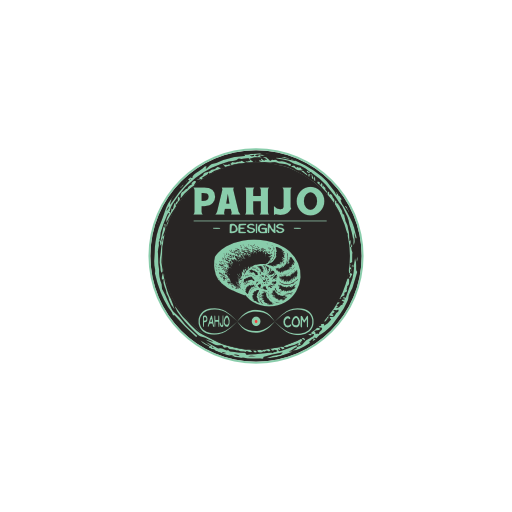In this article, I help you choose the best wood for DIY cabinets. Get the information you need to choose the ideal wood species for your custom cabinets.
Even if you don’t need new cabinets, the tips can help you choose the best type of wood for other DIY projects.
Here are some jump links to the main sections of this post to help you quickly find the information you need.
Basic Cabinet Components and Why it Matters
Best Wood for DIY Cabinets
Which Wood is Best for Painted Cabinets?
Plywood and MDF Cabinets
Tools Needed for DIY Cabinets
Cabinet Components and Why it Matters

The key elements of a cabinet include the following visible and non-visible parts.
Keep in mind, I did not include cabinet hardware such as knobs, handles, and drawer slides.
- Cabinet carcass (non-visible)
- Drawer boxes (non-visible)
- Shelving (non-visible)
- Face frame (visible)
- Cabinet doors (visible)
- Drawer fronts (visible)
Why does this matter?
In many cases, cabinet makers and DIYers use different types of wood for visible and non-visible parts.
This reduces material cost without sacrificing quality and stability.
For example, wood kitchen cabinets may be built with 3 types of wood as listed below:
- Birch Plywood
- Cabinet carcass (Cabinet Boxes)
- Drawer boxes
- Hardwood Veneer:
- Inner side of cabinet carcass
- Solid Hardwood (Maple Wood)
- Face frame
- Cabinet doors
- Drawer fronts
- Shelving
Plywood cabinets costs less than solid wood cabinets.
So, it makes sense to use less expensive wood on the non-visible parts of the cabinet.
13 Best Wood Types for DIY Cabinets
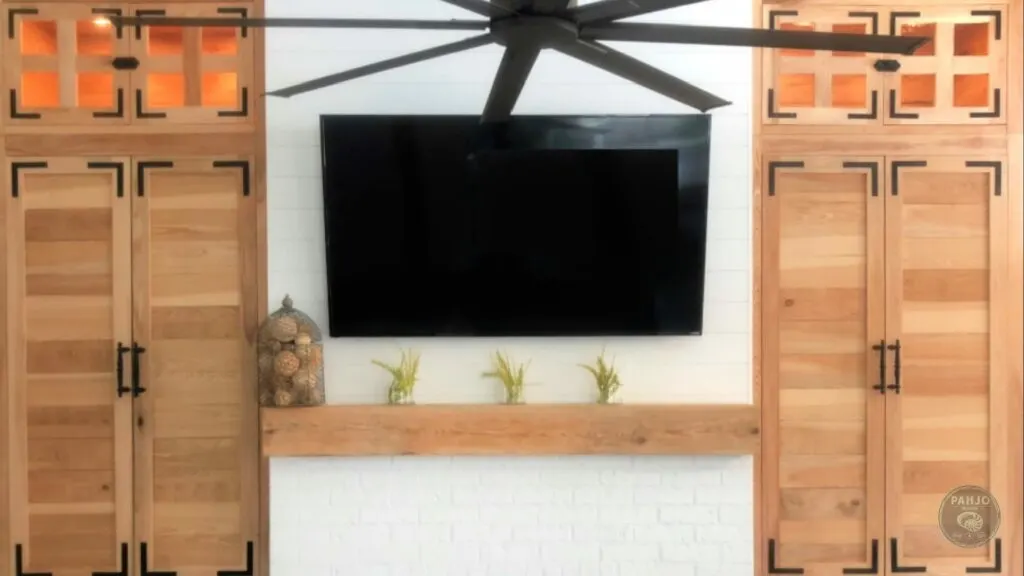
Obviously, there are many options when it comes to different types of wood cabinets.
These cabinet wood types mentioned below range from classic white oak to knotty alder.
Keep in mind, each offers unique characteristics to complement your kitchen design preferences.
So, what is the best wood for DIY cabinets?
The best wood for DIY cabinets depends on personal preference, wood availability, and budget.
Below is a list of the 13 best natural wood types with the details you need to choose the best wood for DIY cabinets.
- White Oak
- Red Oak
- Hard Maple
- Soft Maple
- Cherry
- Birch
- Hickory
- Ash
- Pine
- Walnut
- Mahogany
- Clear Alder
- Knotty Alder
1 – White Oak Wood
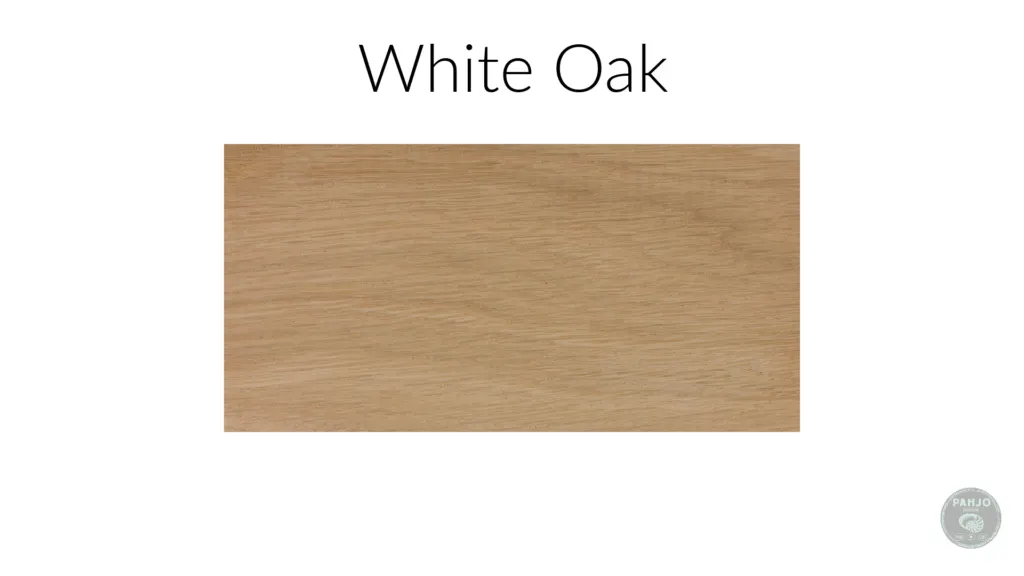
- Color: White Oak has a light to medium brown color with a grayish or olive tint.
- Grain Pattern: White Oak has a tight, straight grain pattern that gives it a more uniform appearance than Red Oak.
- Hardness: White Oak has a Janka hardness rating of 1360. It is sturdy and a great choice for custom cabinetry.
- Price: White Oak is moderately priced and valued for its strength and durability.
2 – Red Oak Wood

- Color: Red Oak has a light to medium brown color with a reddish tint and warm undertone.
- Grain Pattern: It features a distinctive grain pattern with open pores that adds a rustic look to the wood.
- Hardness: Red Oak has a Janka hardness rating of 1290. This makes it a popular option for kitchen cabinetry.
- Price: Red Oak is moderately priced and an excellent choice for wood cabinetry and a variety of other projects.
3 – Hard Maple Wood
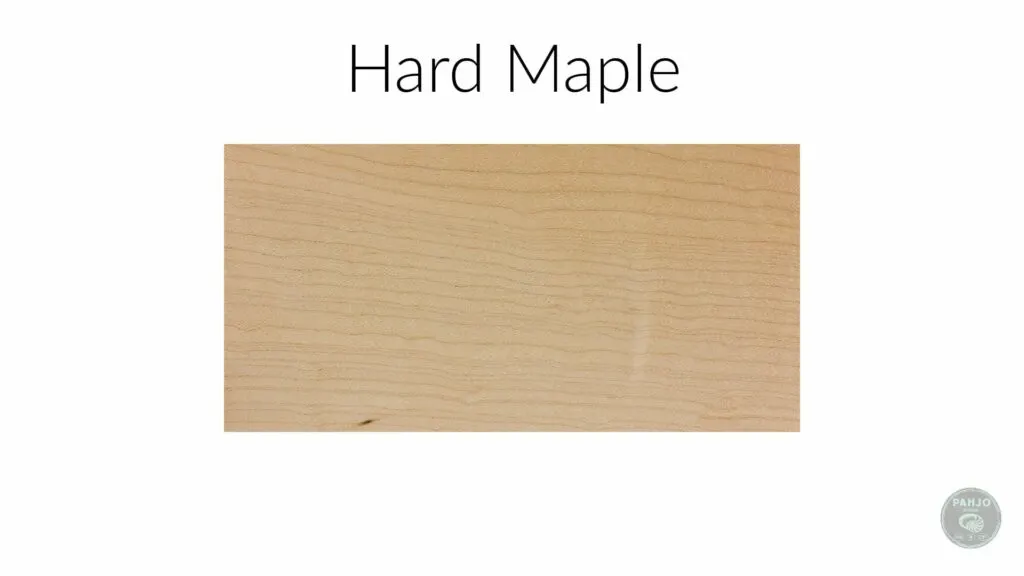
- Color: Maple features a pale to light reddish-brown color.
- Grain Pattern: It has a fine, even wood grain pattern that provides a smooth and uniform surface. Maple is often chosen for modern look or contemporary look due to its minimalistic appearance.
- Hardness: With a Janka hardness rating of 1450, Maple is a hard, durable wood and a great option for kitchen cabinets, bathroom cabinets, and more.
- Price: Maple has a moderate to high price depending on the grain.
4 – Soft Maple Wood
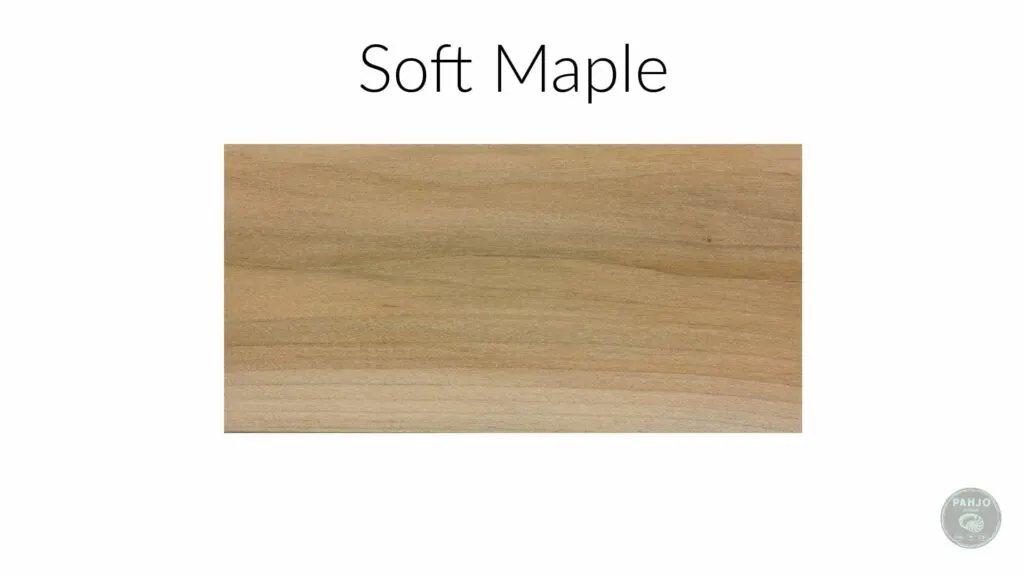
- Color: Soft maple has a heartwood color that ranges from light brown to medium brown. Often times, it contains pink or gray undertones. The sapwood is typically lighter in color than the heartwood.
- Grain Pattern: Soft maple contains a varied and open grain pattern. It contains straight grain as well as occasional swirls or waves. This adds character to the wood’s appearance.
- Hardness: Soft maple is softer than hard maple, with a Janka hardness rating typically ranging from 700 to 950 pounds-force. Although considered one of the softer woods, it is still considered a hardwood.
- Price: Soft maple is generally less expensive than hard maple. This makes it one of the best materials for painted cabinets.
5 – Cherry Wood
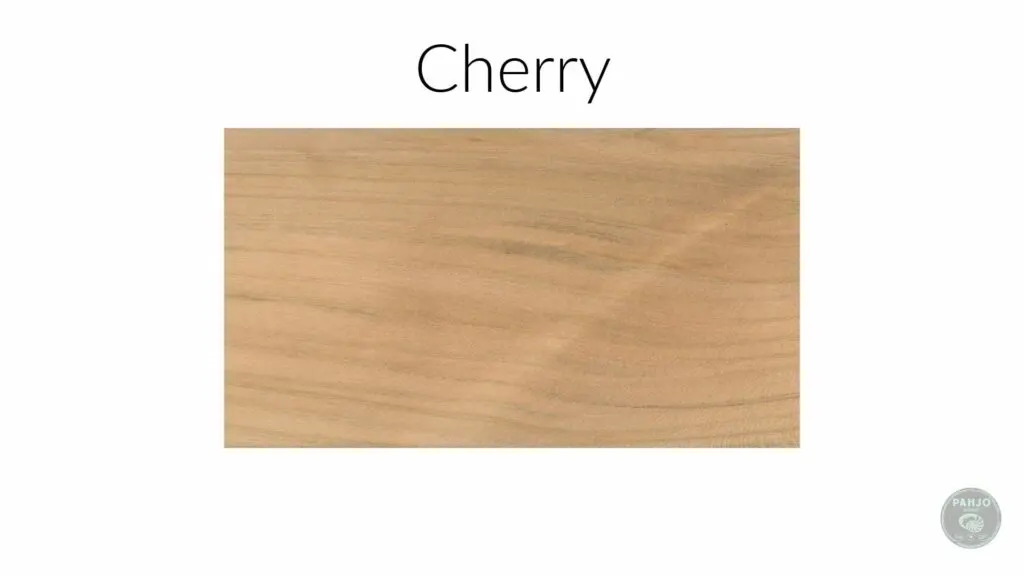
- Color: Cherry exhibits a range from reddish-brown to deep red as it matures.
- Grain Pattern: Cherry has a fine, straight grain that contributes to its classic and timeless appearance.
- Hardness: Cherry has a Janka hardness rating of 995, which makes it a softer wood in the hardwood classification.
- Price: Cherry is moderately priced to high, reflecting its premium and sought-after status.
6 – Birch Wood
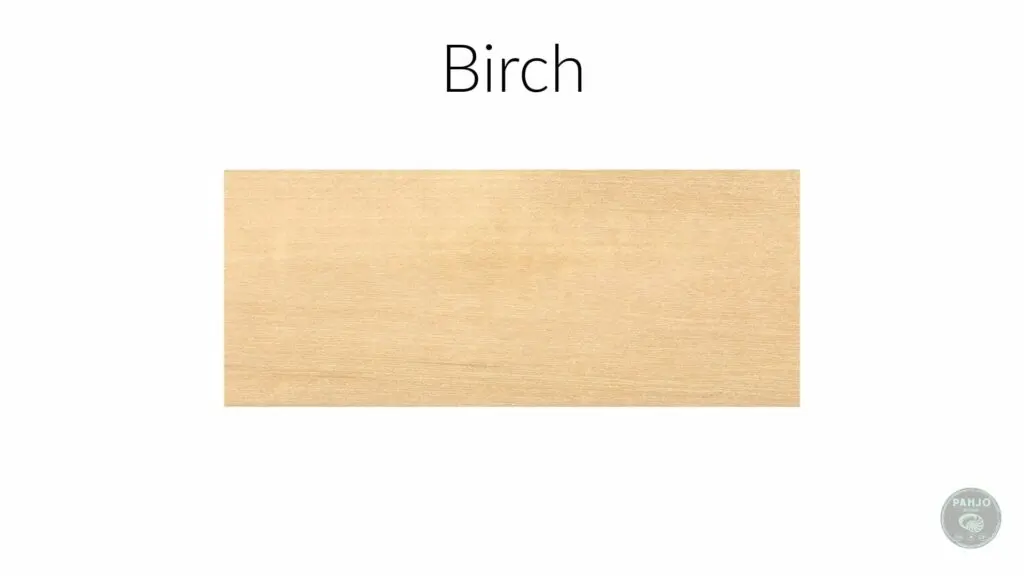
- Color: Birch comes in various shades, from light yellow to reddish-brown.
- Grain Pattern: Birch features an even and fine-grain wood pattern.
- Hardness: Birch has a Janka hardness rating of 1260.
- Price: Birch is moderately priced and readily available at most hardwood dealers or big box stores..
7 – Hickory Wood
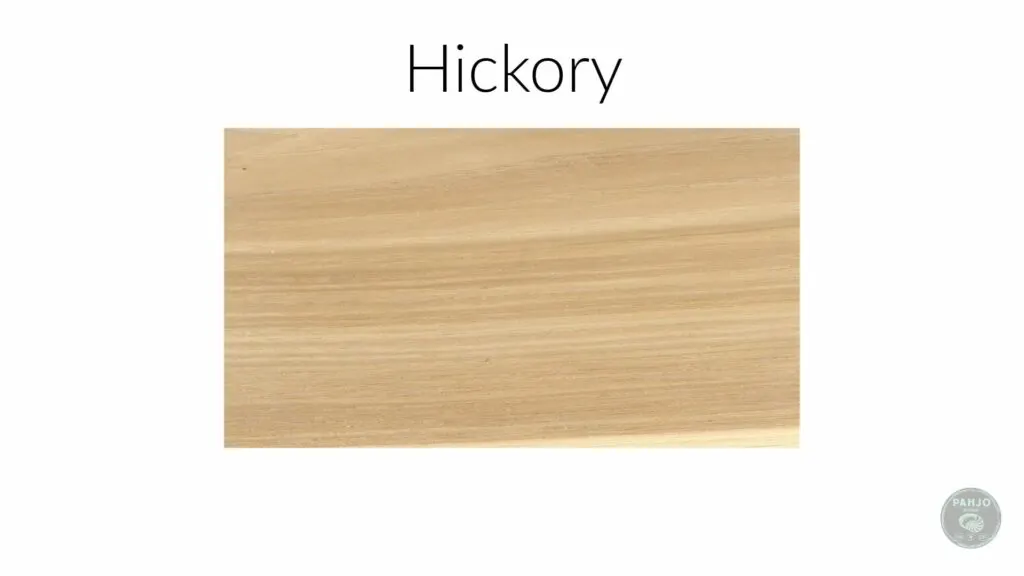
- Color: Hickory varies from white to light brown.
- Grain Pattern: It has a prominent grain pattern with a variety of colors.
- Hardness: Hickory is one of the hardest domestic hardwoods with a Janka hardness rating of 1820. Also, this makes it the most durable.
- Price: Hickory is moderately priced to high. The higher price reflects its durability making it an excellent choice for kitchen cabinets.
8 – Ash Wood
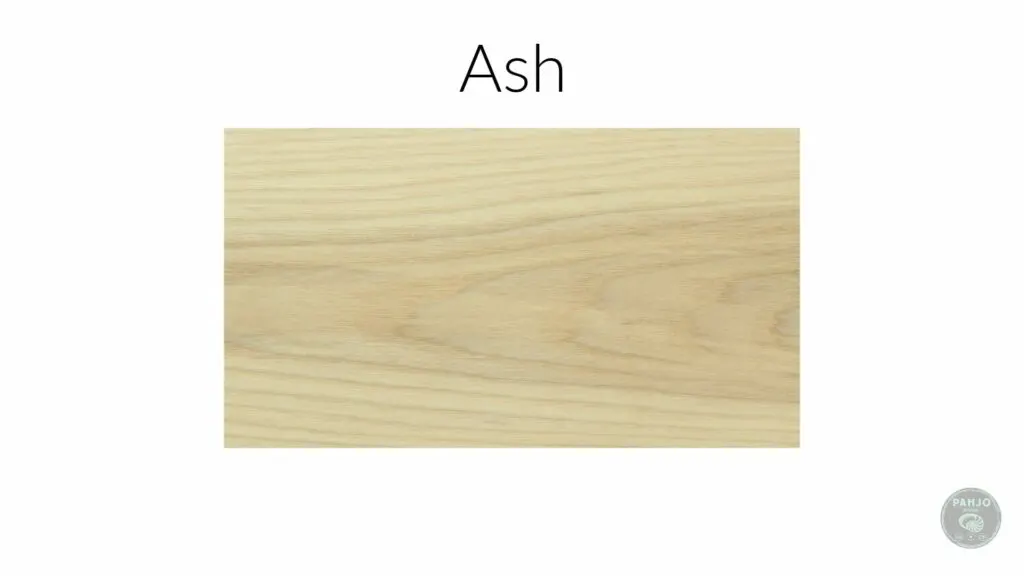
- Color: Ash ranges from light to medium brown.
- Grain Pattern: Ash features a bold and pronounced grain pattern.
- Hardness: With a Janka hardness rating of 1320, Ash is durable and has good shock resistance.
- Price: Ash is moderately priced, making it a popular choice for furniture and cabinets.
9 – Pine Wood
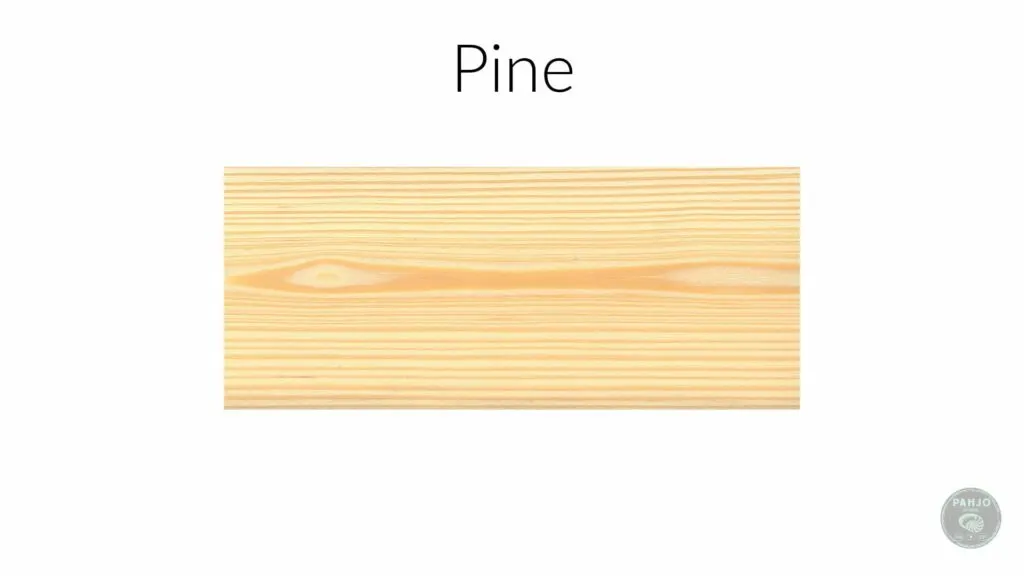
- Color: Pine has a light to medium yellow color.
- Grain Pattern: It has a straight grain with a uniform texture.
- Hardness: Pine is a soft wood with a Janka hardness rating of 380.
- Price: Pine is inexpensive to moderately priced. This makes it the best option for those on a budget.
10 – Walnut Wood
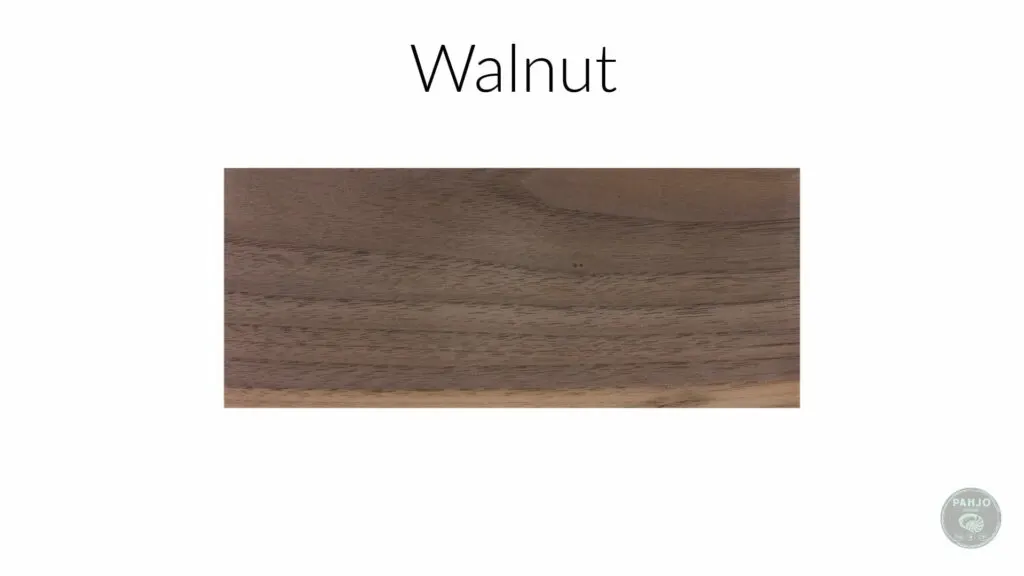
- Color: Walnut features many dark browns. Many consider Walnut as one of the highest quality luxury wood.
- Grain Pattern: Walnut exhibits a straight grain pattern with waves. Naturally, this provides a distinctive appearance.
- Hardness: Walnut has a Janka hardness rating of 1010.
- Price: Walnut is priced high because of the rich color and unique grain patterns.
11 – Mahogany Wood

- Color: Mahogany ranges from reddish-brown to deep red.
- Grain Pattern: It has an interlocking grain with a stripey appearance.
- Hardness: Mahogany has a Janka hardness rating of 800.
- Price: Mahogany is moderately priced to high, often chosen for its luxurious appearance.
12 – Clear Alder

- Color: Alder has a light brown color with hints of red or yellow.
- Grain Pattern: It features a straight and even grain which helps achieve a smooth finish.
- Hardness: Alder has a Janka hardness rating of 590.
- Price: Alder is moderately priced, making it a versatile and cost-effective choice for cabinets.
13 – Knotty Alder

- Color: Knotty alder has a light color with pale yellow to light brown hues.
- Grain Pattern: Knotty alder often features a straight and uniform grain pattern. Wood knots disrupt the grain pattern for a natural look.
- Hardness: Alder wood, in general, is moderately soft and less durable than other woods. Dents and scratches make for a rougher look, which some people prefer.
- Price: Knotty alder is often less expensive than clear alder.
Best Wood for Painted DIY Cabinets
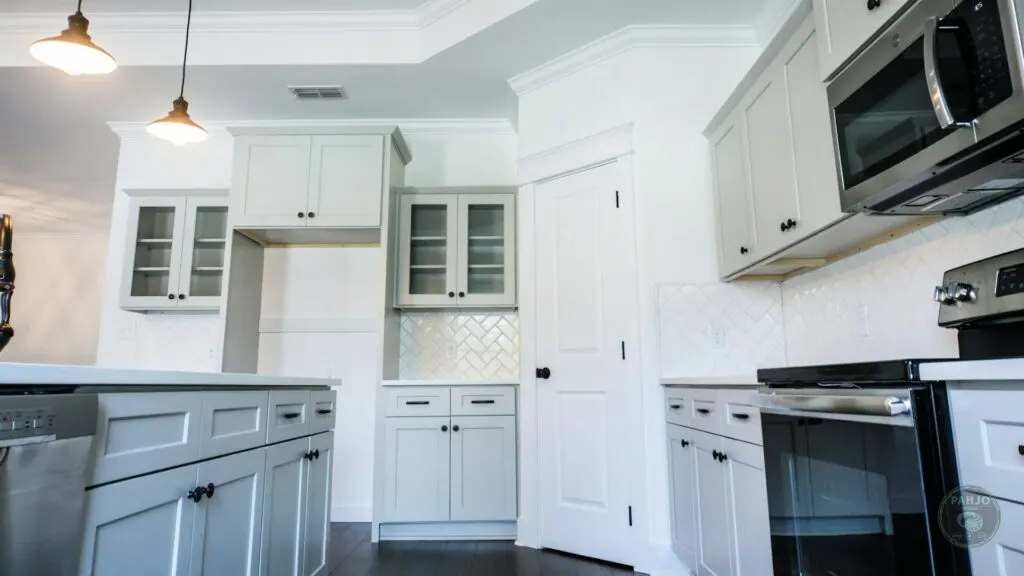
What best wood to use for DIY painted cabinets?
Solid maple wood is the best choice for painted cabinet doors, face frame, and shelves.
Its subtle grain pattern, consistent color, and smooth surface make it an excellent option for painted cabinets.
Other different wood species for painted cabinets include:
- Maple: Known for its closed grain structure, smooth surface, and consistent light color.
- Poplar: Valued for its ease of painting, smooth texture, and cost-effectiveness.
- Birch: Similar to maple, birch has a closed grain structure and a light color that is conducive to painting.
Reasons for Paint-Grade Wood
Smooth Surface: Obviously, natural woods with a smooth and even surface makes for a good choice. Hardwoods like maple and poplar, as well as MDF (Medium-Density Fiberboard), accept paint evenly. However, open-grained wood absorbs paint and requires additional coats.
- Closed Grain Structure: Woods with closed wood fibers or tight grain structure increase a wood’s paintability. The closed-grain provide a smoother surface for painting which allows the paint to adhere more evenly.
- Minimal Grain Pattern: Woods with minimal or subdued grain patterns work well for painted cabinets. Essentially, a strong grain shows through the paint. Hardwoods like birch, maple, and poplar have a subdued grain pattern.
- Consistent Color: Woods with a consistent color provide good options for painted cabinets. This makes paint colors easy to achieve with less coats.
- Acceptance of Primers and Paints: Some woods have properties that make them more receptive to primers and paints. For example, Poplar is easy to work with. Also, it accepts paint well.
- Stability and Resistance to Warping: Stability is crucial to prevent issues like warping or cracking over time. Woods with good stability, such as maple, are preferred.
- Cost: Some less expensive woods, like poplar and MDF, are chosen for painted cabinets to achieve a cost-effective solution without sacrificing quality.
While these different options for painted cabinets, the right wood choice for you depends on the overall look you prefer.
Keep in mind, sanding, priming, and using quality paints help you achieve a natural finish.
Plywood and MDF (Medium Density Fiberboard)
Both plywood and MDF offer more affordable wood alternatives to natural wood for cabinets.
However, both plywood and MDF have some drawbacks compared to natural wood.

Plywood is an engineered wood made by bonding multiple thin layers of wood together.
As a result, these multiple thin layers need to be covered with edge banding.
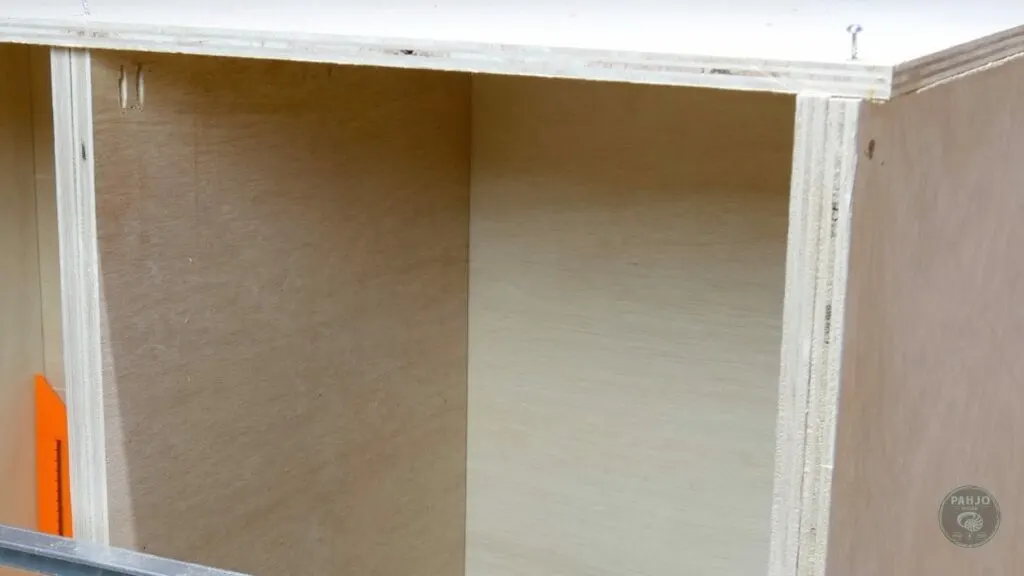
Although plywood comes in various wood veneers, it does not offer the same unique grain patterns as solid wood.
In addition, high-quality plywood costs more than lower-quality natural wood options.
For example, pine wood costs less than high-quality plywood.
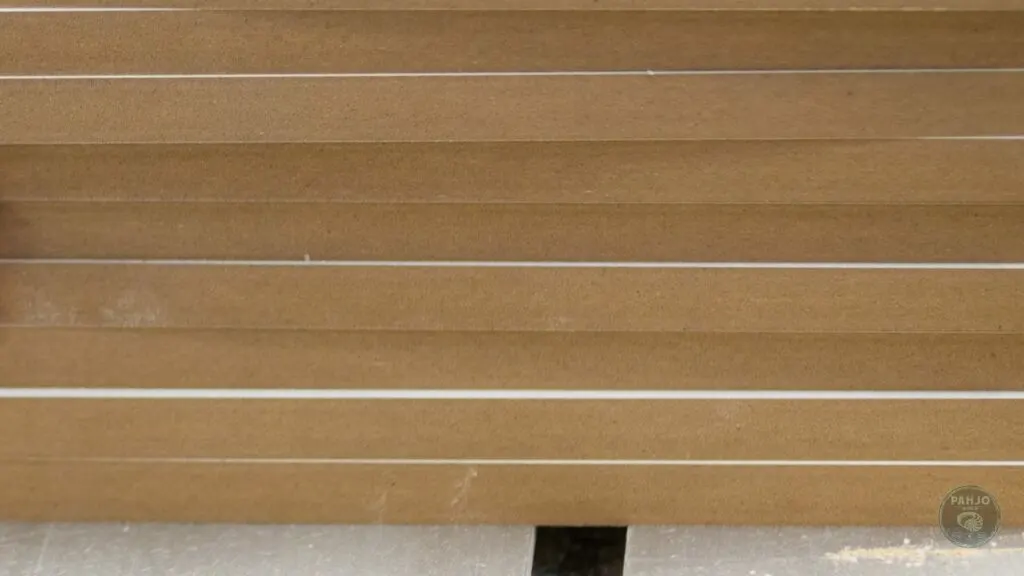
MDF is an engineered wood product made by compressing wood fibers and resin to create a dense, uniform board.
Obviously, it can only be used for painted cabinetry.
The main drawbacks of MDF are:
- Moisture sensitivity: Prolonged exposure to humidity and moisture causes MDF to swell.
- Weight: MDF is dense and heavy. As a result, this causes issues with larger cabinets.
- Strength: Although MDF weighs more than plywood, it cannot support much weight.
Tools for DIY Cabinets
Cabinet Paint
Track Saw or Table Saw
Pocket Hole Jig
Door Handle Cabinet Jig
Drawer Slide Jig
Hinge Mounting Plate
Shelf Pin Jig
Concealed Hinge Jig

Conclusion – Best Wood for DIY Cabinets
Most importantly, I hope this article helps you choose the best wood for DIY cabinets.
Selecting the wood for cabinets involves careful consideration of many factors.
These factors include durability, cabinet design, and cost.
Hardwoods like maple, hickory, and oak used with high-quality plywood, provide the best wood option to build cabinets.
For painted cabinets, plywood and MDF offer the most affordable option.
Related Posts:
